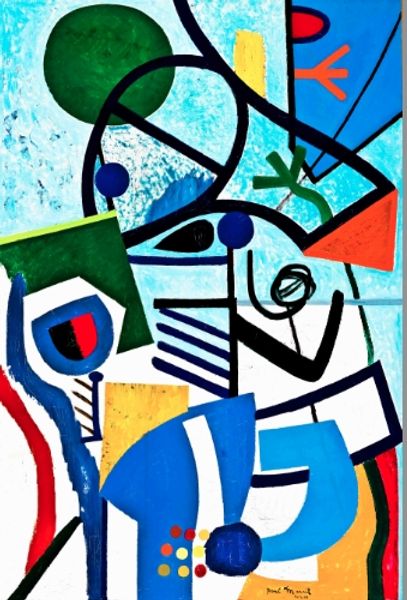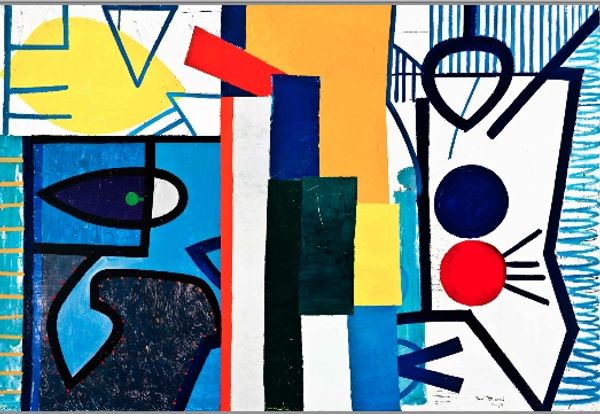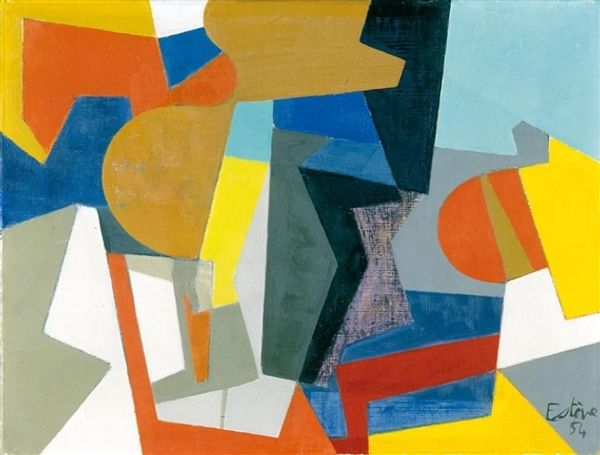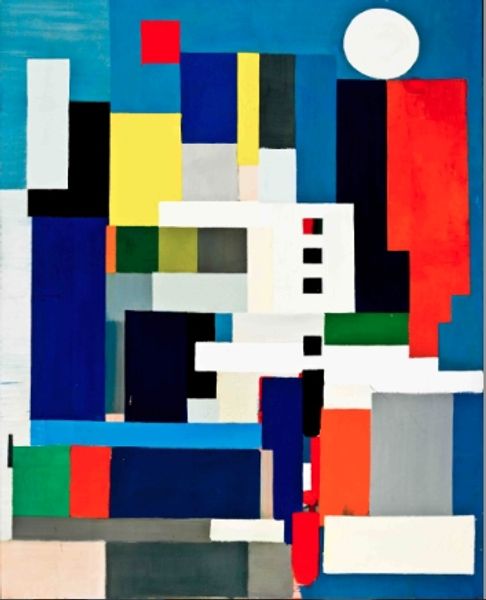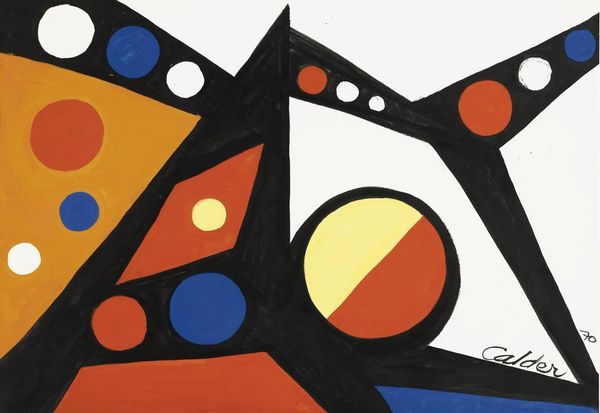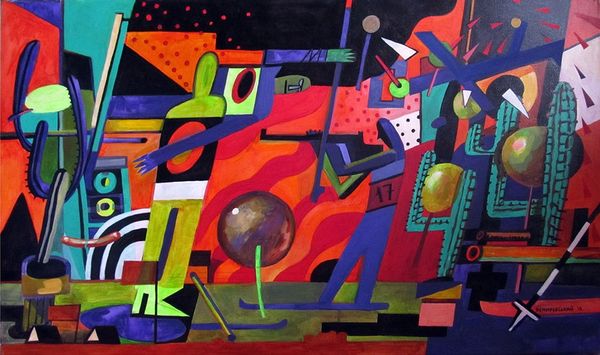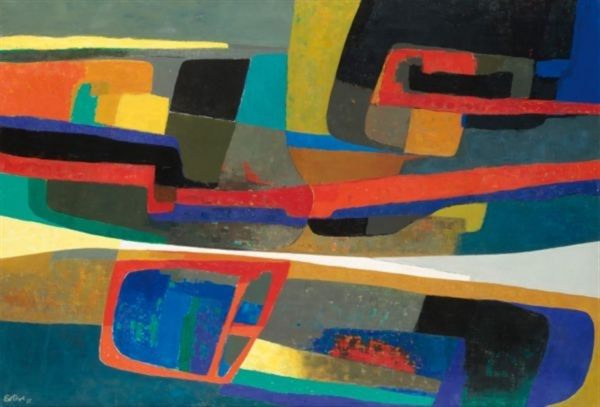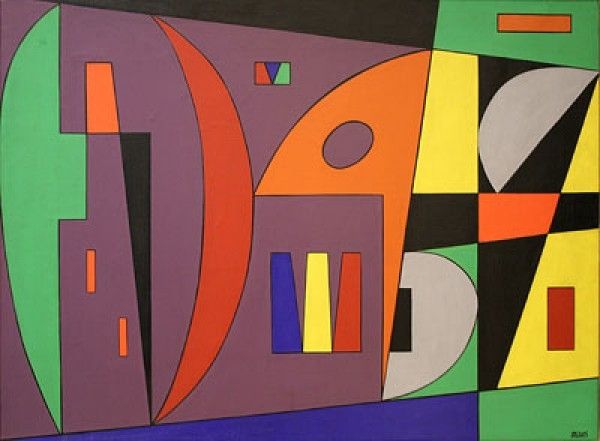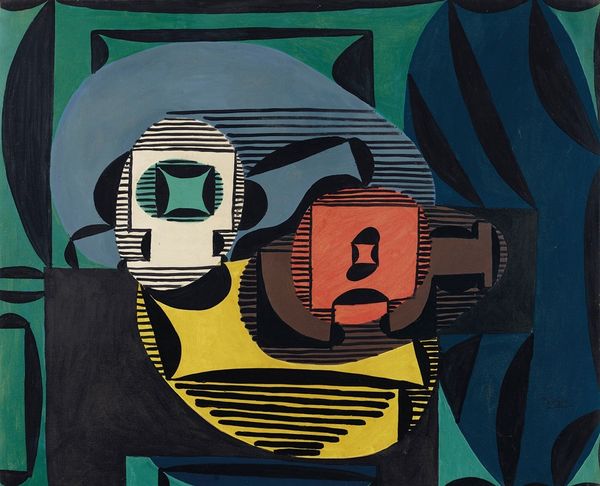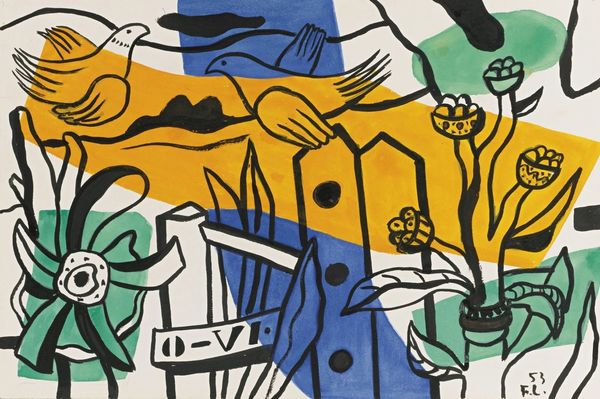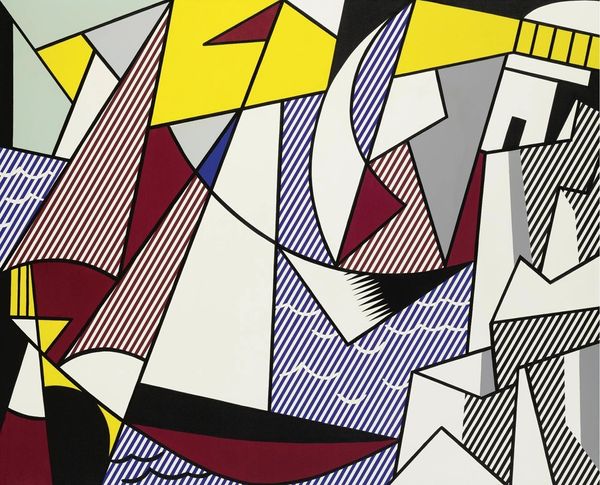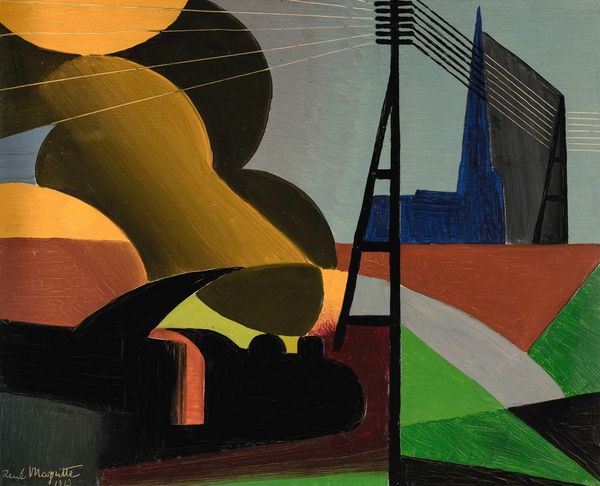
painting, acrylic-paint
#
painting
#
pop art
#
colour-field-painting
#
acrylic-paint
#
geometric
#
abstraction
#
line
#
modernism
#
hard-edge-painting
Dimensions: 80 x 110 cm
Copyright: Patrimoine Marcil
Editor: This is René Marcil’s “Abstract 3,” a painting from 1956 rendered in acrylic paint. The composition is really striking – bold colors and geometric shapes…almost playful, but also kind of tense. What do you see in this piece? Curator: I see a reflection of its time. The mid-20th century was marked by anxieties and radical societal shifts, wasn’t it? Abstract art, and particularly Hard-Edge painting like this, offered a visual language to express both the chaos and the desire for order in a rapidly changing world. Editor: Order and chaos? How so? Curator: Well, consider the use of geometric shapes, which evokes structure, control and the increasing influence of technology. Yet, these rigid forms are disrupted by the vibrant and conflicting colors, a sort of rebellion against uniformity. Can you see how the interplay between these elements may mirror the push and pull of social forces at that time? Editor: I see what you mean. It’s like the painting is capturing this cultural moment when the old world was clashing with the new. Does the lack of any recognizable figures relate to that at all? Curator: Absolutely. Abstraction rejects traditional representation, which empowers artists to explore ideas outside the constraints of existing norms and conventions. It challenges us to question our perceptions and engage with the artwork on a more personal, interpretative level. And who defines what “recognizable” even *means*? Editor: That’s true! I didn't really think about it that way. It makes you think about the world around you… Curator: Precisely! And how art both reflects and challenges that world.
Comments
No comments
Be the first to comment and join the conversation on the ultimate creative platform.
